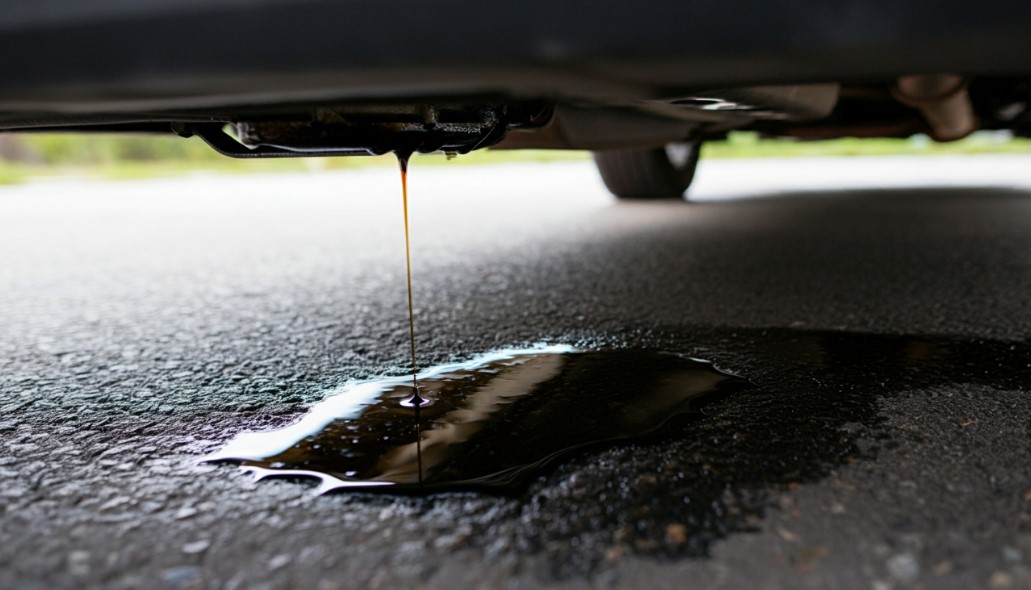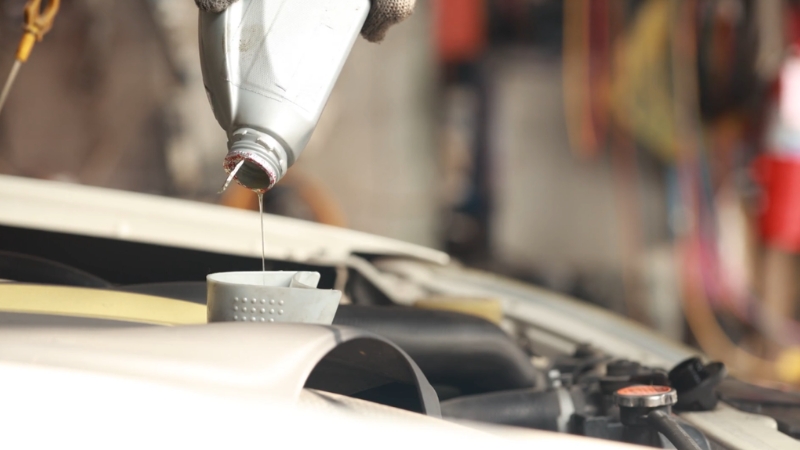
Share Post:
Nobody wants to wrestle with a stubborn steering wheel, especially when trying to maneuver through a busy intersection or make a tight turn in a crowded parking lot. Losing that smooth, effortless feeling of turning the wheel can feel downright frustrating.
One moment, everything runs like clockwork, and the next, you notice strange sounds, stiff handling, or unsightly puddles under the car. A power steering fluid leak can sneak up out of nowhere, causing problems that might seem minor at first but can quickly lead to bigger headaches if left unchecked.
Thankfully, there’s no need to panic or feel helpless. Plenty of drivers have faced similar issues, fixed them, and continued down the road without missing a beat.
The information below breaks down the key reasons behind a power steering fluid leak and lays out simple, effective methods to find and fix the source. Let’s get right into it.
Table of Contents
ToggleKey Takeaways
- Look for puddles, low fluid levels, or stiff steering to catch leaks before they worsen.
- Leaks often come from worn hoses, loose clamps, faulty pumps, or cracked reservoirs.
- Replace damaged hoses, pumps, or reservoirs using basic tools; follow repair manuals closely.
- Regular checks, correct fluid levels, and using the right fluid prevent future leaks.
- For complex issues, consult a mechanic to avoid further complications.
Finding The Source Of The Trouble

Pinpointing the exact spot where fluid escapes might feel like searching for a needle in a haystack. A step-by-step approach can make the process much less daunting.
1. Perform A Thorough Visual Inspection
Start by looking at the hoses, pump, and reservoir. Shine a flashlight into dark corners. Any damp area or glistening surface might indicate a leak. Even a slight wetness around a fitting can mark the trouble spot.
2. Clean Away Dirt And Grime
Grease, dust, and road grime can mask leaks. Wipe away residue with a rag or gentle degreaser, then recheck the area. A clean surface makes it easier to spot fresh fluid after a short drive or engine run.
3. Use Leak-Detection Dye
Many auto parts stores sell UV dye that can be added to the power steering fluid. After adding dye and letting the car run briefly, shine a UV light to find bright, glowing traces of fluid. It might sound like a spy gadget, but it works wonders for detecting sneaky leaks.
Tackling Repairs Step-By-Step
Once the culprit stands revealed, it’s time to consider the best repair strategy. Choices depend on location, severity, and personal comfort level with mechanical work.
Replacing Worn Hoses And Lines
When a hose or line develops cracks or tiny holes, swapping it out becomes a priority:
- Drain The System: Always start by removing fluid to prevent a messy cleanup later. Position a pan under the reservoir and open the system as instructed by the repair manual.
- Remove The Damaged Hose: Loosen clamps or fittings carefully. Slide the hose off and compare it to the new replacement part to ensure a correct match.
- Install The New Hose: Secure the fresh hose firmly. Double-check that clamps sit tight and snug. Give a quick pull to confirm nothing slips off easily.
- Refill With Fresh Fluid: Add the recommended fluid, start the engine, and turn the wheel from lock to lock a few times. Keep an eye out for any lingering leaks.
Pump Replacement
A faulty pump demands a bit more effort:
- Disconnect The Power Steering Belt And Lines: Follow instructions from a repair manual to reach the pump. Remove the belt that drives the pump and any hoses connecting it.
- Remove The Old Pump: Unbolt it carefully and lift it out. Watch out for any residual fluid still inside.
- Install A New Pump: Fit the new pump, tighten bolts, and reattach hoses and the belt. Fill with fluid, then cycle the steering wheel. Listen for odd noises or vibrations before finishing up.
Sealing Up A Leaky Steering Rack
A leak in the steering rack often requires more skill and sometimes specialized tools. Small leaks might be fixed by replacing specific seals, while a major leak can mean replacing the entire rack assembly.
It’s often best to leave rack-related repairs to a trusted professional, as the process can be more intricate. Trying a home fix without proper know-how and equipment can lead to more problems.
Repairing Or Replacing The Reservoir
A cracked reservoir calls for swapping it out:
- Drain The Fluid: Make sure the system is as empty as possible before disconnecting the reservoir.
- Remove The Old Reservoir: Loosen any bolts, screws, or clamps. Gently remove hoses attached to it.
- Install The New Reservoir: Position the new one, attach hoses, and secure it firmly. Refill the system and check again for leaks.
Preventing Future Leaks

Nobody enjoys dealing with leaks again and again. A few simple habits can keep the system running smoothly:
- Regular Checkups: Peek under the hood every few weeks. Look at the fluid reservoir, hoses, and pump for early signs of trouble.
- Keep Fluid Levels In The Proper Range: Maintaining correct fluid levels helps protect the entire system. Running low not only strains the pump but also encourages premature wear.
- Use The Right Fluid: Different vehicles need different types of fluid. Stick to what the manufacturer recommends. High-quality fluid helps prevent unnecessary strain on seals and gaskets.
- Avoid Overfilling: Too much fluid can put pressure on seals, causing leaks. Fill carefully, and wipe up any spills around the reservoir. It’s like changing coolant.
Common Reasons Behind The Drips And Drops
A power steering fluid leak never appears out of thin air. Parts wear down, clamps become loose, or cracks form in all the wrong places. Identifying the usual suspects helps narrow down the cause quickly.
1. Worn Or Damaged Hoses
Many vehicles rack up thousands of miles, dealing with changes in temperature, vibrations, and constant fluid pressure. Over time, hoses that once looked brand new start showing age.
Tiny cracks, splits, or pinholes might form, causing fluid to escape. The hose material can feel brittle, or the outside may look damp. Even a small defect here can let fluid drip onto your driveway.
2. Loose Or Faulty Hose Clamps
Hose clamps keep connections snug and leak-free. Eventually, a clamp may loosen or corrode. When that happens, fluid finds the weakest point and sneaks out.
A leaky clamp area often leaves a telltale wet spot where the hose meets a metal fitting.
3. Power Steering Pump Woes
The pump keeps fluid moving through the system. Inside, seals and gaskets prevent leaks. When those seals wear out, fluid begins escaping from around the pump.
Spotting a failing pump early matters, as fixing a pump-based leak often involves replacing the entire unit.
4. Steering Rack Seals Gone Bad
The steering rack has several seals that keep fluid contained. If those seals wear down or fail, fluid can seep out.
Depending on the vehicle’s design, a leak in the rack might be harder to access, often requiring more advanced tools and skills to remedy.
5. Cracked Reservoir
The fluid reservoir stores the precious steering fluid. Damage to the reservoir, maybe a crack or a faulty seal where the hoses attach, can let fluid trickle out slowly.
If the reservoir’s surface looks suspicious or fluid appears on the outside, there might be a need for a replacement.
Spotting A Power Steering Fluid Leak Before It Gets Worse

Catching the problem early sets the stage for an easier fix. Missing the signs can lead to more involved and expensive repairs down the road. Keep an eye out for a few key indicators:
Puddles On The Ground
A reddish-brown or amber liquid under the front of the vehicle hints at a leak. Check carefully to make sure it’s not engine oil or transmission fluid. Power steering fluid tends to have a thinner consistency and a distinctive smell.
Low Fluid Levels In The Reservoir
Keep tabs on the fluid level. If it seems to drop regularly, a leak likely lurks somewhere in the system.
Whining Or Squealing Sounds
Strange noises when turning the wheel often indicate low fluid, forcing the pump to struggle. The steering wheel might feel stiffer than normal.
Increased Steering Effort
More muscle needed to turn the wheel usually points to insufficient fluid. That stiffness at low speeds or when trying to parallel park can be a dead giveaway.
Catching leaks at the first sign allows for quicker, simpler repairs. Waiting only gives the problem time to grow.
Considering Costs
@rizzfixx Power steering leak fix #steering #steeringwheel #howto #rizz #carsoftiktok #mechanic #car #mechanical #rizzfixx #viral #fypシ #viralvideos ♬ original sound – M.Rizwan
The cost of repairing a power steering fluid leak depends on several factors. The nature of the leak, required parts, labor involved, and vehicle brand all influence the total bill.
Professional Repair
Most moderate to serious leaks, handled by a mechanic, might cost somewhere between 500 and 650 dollars. Complex problems or premium parts can bump the price up.
Do-It-Yourself Approach
For minor leaks, something like a hose change might only cost the price of a new hose and some fluid. That could come in well under 100 dollars. Also, there are stop-leak additives available on the market.
Those products can sometimes provide a temporary fix at a low cost, but it’s wise to remain cautious. Additives often serve as a band-aid rather than a permanent solution.
Keep in mind that saving a few bucks now by ignoring a slow leak might lead to heftier costs later. It’s better to fix a small problem early than to replace an entire power steering rack months down the road.
Extra Tips And Advice
- Check Your Power Steering Belt: A worn belt can lead to pump strain. While not directly related to leaks, making sure the belt is in good shape supports overall steering health.
- Watch For Unusual Vibrations: If the steering wheel shakes at certain speeds or turns, it might not be just a leak. Consider a quick inspection by a trusted mechanic to rule out other issues.
- Remember The Safety Factor: Hard steering can cause accidents or near-misses in busy driving conditions. Addressing leaks ensures better vehicle control and peace of mind on the road.
- Keep A Small Toolkit Handy: Having a basic set of tools, a funnel, and some spare fluid in the trunk might help in case of unexpected drops in fluid level. Even if you can’t fix the problem right there, topping up might get you safely to a repair shop.
- Don’t Be Afraid To Seek Help: Not everyone feels comfortable handling car repairs. If something seems too daunting, reach out to a professional. Mechanics handle power steering issues every day and can offer guidance or solve the problem promptly.
When To Consult An Expert

There comes a point when the leak or repair process might become overwhelming. For example, if the steering feels incredibly stiff, the pump makes bizarre noises, or fluid pours out even after a small fix, bring in someone with experience.
Paying for professional help saves time and avoids making the problem worse. A knowledgeable mechanic can quickly identify issues, source quality parts, and ensure everything is put back together correctly.
The peace of mind that comes from knowing the steering system is reliable often outweighs the price of labor.
Final Thoughts
A power steering fluid leak might feel like an unwelcome complication, but it doesn’t have to turn into a nightmare. Spotting the warning signs early and taking action promptly can keep small leaks from ballooning into major troubles.
The solution might be as simple as tightening a clamp, replacing a hose, or installing a fresh pump. Regular maintenance, using the correct fluid, and giving a little TLC to the system all help prevent repeats of the same story.
No need to become an expert mechanic overnight. Start by tackling what feels manageable and remain attentive to what the car communicates. The moment the steering regains its smooth grace, a sense of accomplishment follows.
No more strange puddles, no more wrestling the wheel—just confident handling and comfortable drives ahead.
Related Posts:
- Steering Wheel Shaking While Driving? Here’s What It…
- Coolant Leak from the Bottom of the Car - Causes and…
- Can You Tow an EV With a Dead Battery That Cannot Power On?
- Car Leaking Oil? Here's What You Need to Know and…
- Think Google Can Fix Your Car? Here’s Why You’re…
- Clicking Noise In Dashboard When Car Is Off - Here’s…









